Pashmina, often revered as one of the most exquisite natural fibres globally, derives its origins from the undercoat of a remarkable Himalayan inhabitant: the Changthangi goat. Thriving in the rugged, high-altitude terrains of the Himalayas, these goats have surprisingly adapted to their challenging environment by developing a unique and highly sought-after wool known as Pashmina.
At the heart of Pashmina's allure lies its exceptional softness, a quality that has earned it the endearing monikers of "soft gold" and "diamond fibre." The Changthangi goats produce a fine undercoat of wool that boasts a degree of softness and delicacy that is truly extraordinary. The fibres are notably finer than human hair, with diameters typically ranging between 12 to 15 microns. This fineness is the hallmark of Pashmina and a key contributor to its luxurious feel.
Beyond its softness, Pashmina offers a captivating combination of warmth and lightweight comfort. Despite its finesse, it possesses an innate ability to provide remarkable insulation, making it an ideal choice for cold climates. The lightweight nature of Pashmina allows for layering and draping without adding bulk, further enhancing its appeal as a textile of choice for both fashion and function.
This luxurious fibre, highly prized and cherished worldwide has carved a niche for itself in the realm of high-quality textiles. Its journey from the Himalayan highlands to international runways and discerning wardrobes speaks to its universal acclaim. Hence, Pashmina has become synonymous with elegance, comfort, and sophistication, transcending borders and cultures. In addition, its enduring popularity is a testament to the timeless beauty of nature's finest creation: the Changthangi goat's remarkable Pashmina wool.
What is Wool?
Wool is a natural textile fibre that comes from the fleece or coat of sheep and some other animals. Moreover, it is famous for its unique properties, including warmth, softness, and durability.
Wool is popular for its insulating properties, as it can retain heat even when wet. It is also famous for its moisture-wicking abilities, which help regulate body temperature and keep the wearer comfortable. Wool is naturally flame-resistant and has antimicrobial properties, making it a practical and safe choice for various applications.
The process of obtaining wool typically involves shearing or harvesting the animal's fleece. This is followed by cleaning, carding, and spinning the fibres into yarn. Nevertheless, wool is versatile and manufacturers use it to make a wide range of products, including clothing, blankets, carpets, and various other textiles
Types of Wool
From the softness of Merino to the rarity of Vicuña, these distinct types of wool have been cherished for centuries, finding their place in fashion, textiles, and luxury. Therefore, we delve into the fascinating world of lambswool, alpaca, Merino, mohair, qiviut, and Vicuña, uncovering their origins, properties, and significance.
Lambs wool: Nature's Delicate Gift
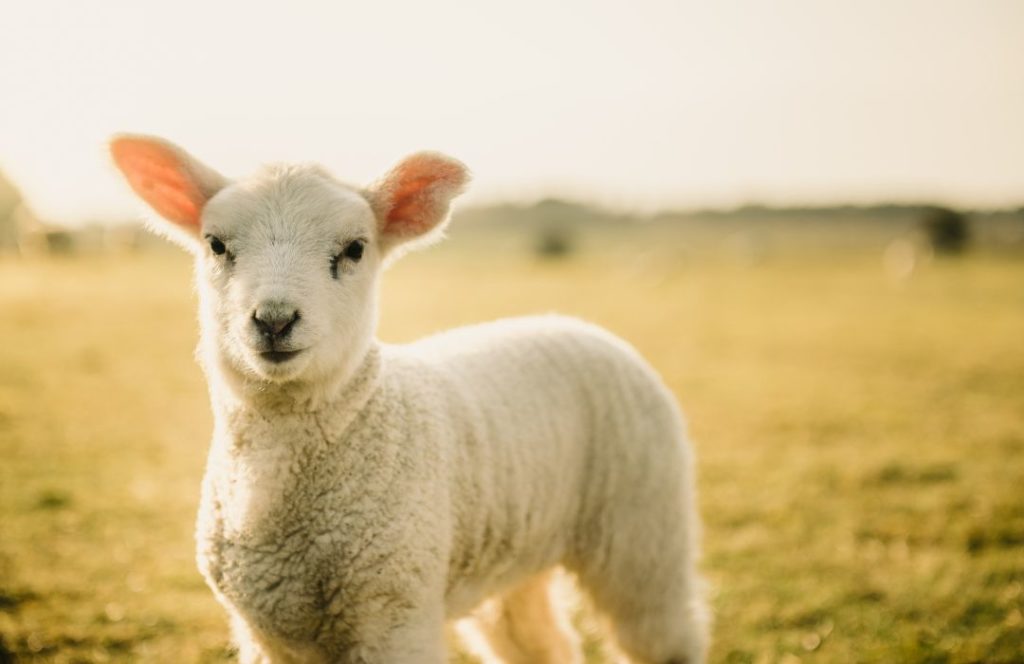
Lambs wool, as the name suggests, comes from the first shearing of young sheep, typically under the age of seven months. This tender fleece is famous for its exceptional softness and fine texture. In fact, it often serves as the benchmark for wool quality. Lambs wool garments are popular for their comfort and warmth, hence, making them ideal for sweaters, scarves, and other cold-weather attire.
Alpaca: The South American Luxury
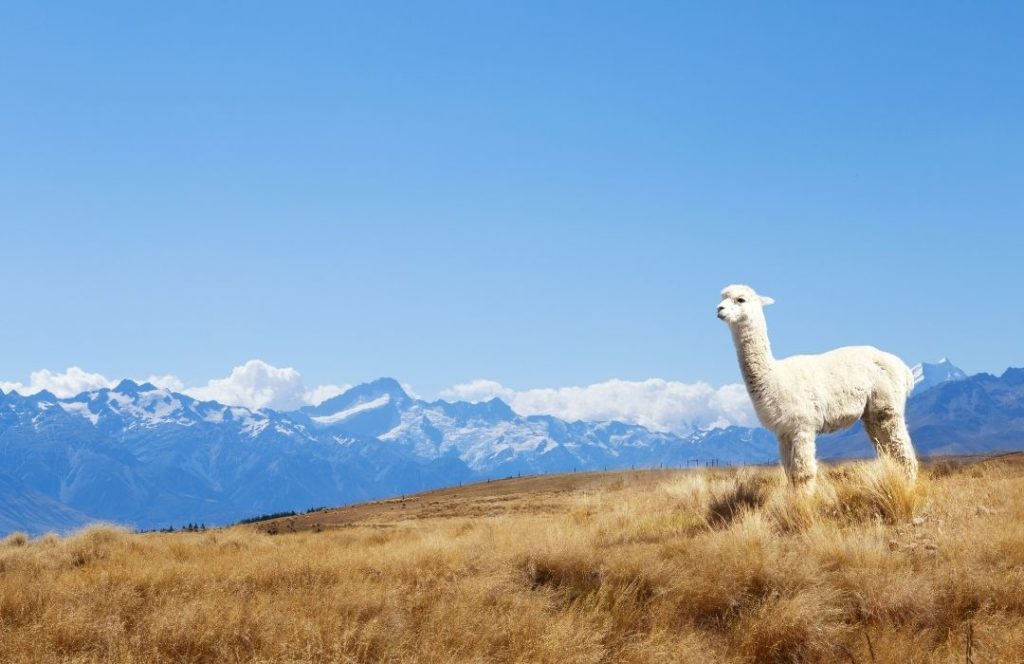
Hailing from the highlands of South America, alpaca wool is famous for its remarkable fineness and silk-like texture. Alpacas produce a spectrum of natural colours, from white and ivory to deep browns and blacks, hence eliminating the need for dyeing. The fibre is popular for its warmth, hypoallergenic properties, and breathability. Therefore, people commonly use it in luxury clothing items like coats, shawls, and gloves.
Merino: The Epitome of Softness
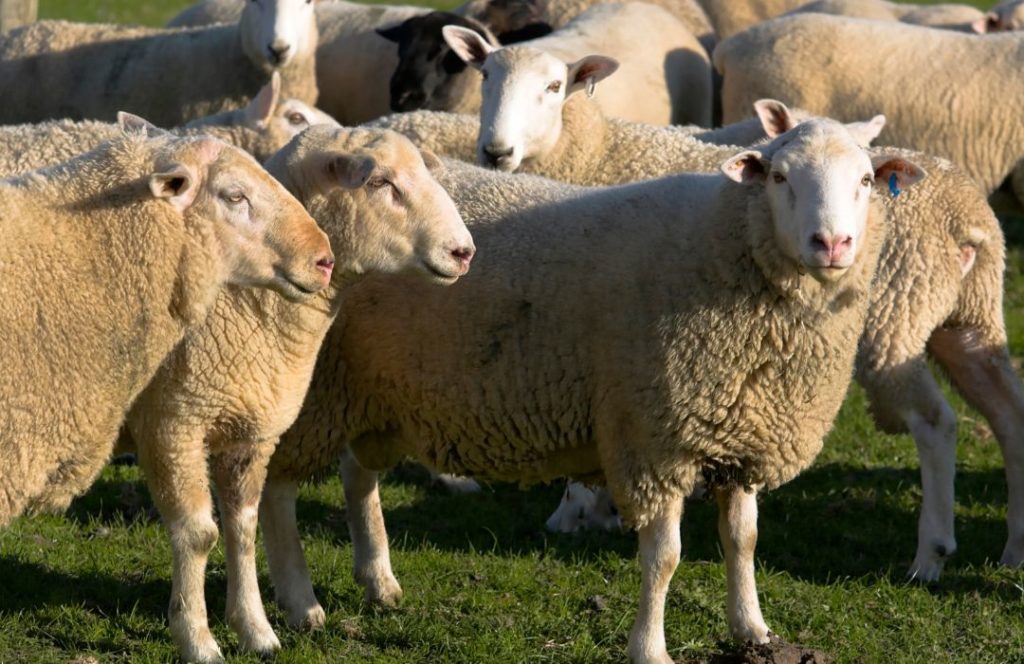
Renowned for its exquisite softness, Merino wool originates from Merino sheep, primarily raised in Australia and New Zealand. The fibres are incredibly fine, undoubtedly making them ideal for next-to-skin wear. Merino wool's natural elasticity, breathability, and moisture-wicking properties have earned it a place in athletic wear, base layers, and high-end garments. It is also highly regarded in the world of activewear for its ability to regulate body temperature.
Mohair: The Lustrous Luxury
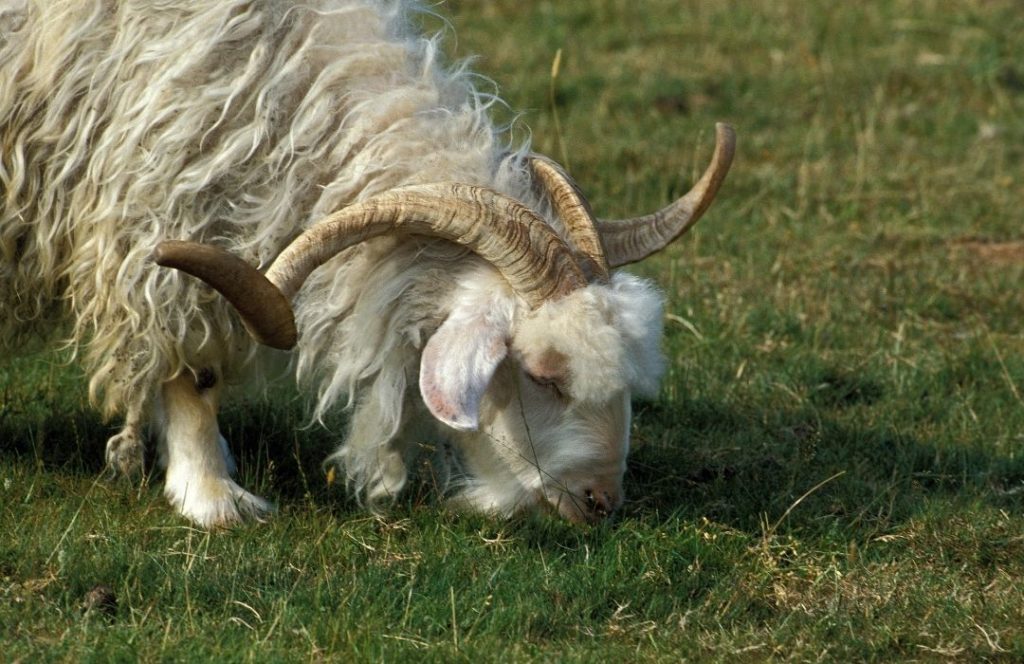
Mohair comes from the Angora goat and is popular for its exceptional luster and sheen. The fibres are smooth, strong, and durable, hence making them suitable for items that require resilience. At times, mohair is often blended with other fibres to enhance their shine and strength. In fact, users frequently use this luxurious wool in high-end suits, outerwear, and elegant accessories.
Qiviut: The Arctic Treasure
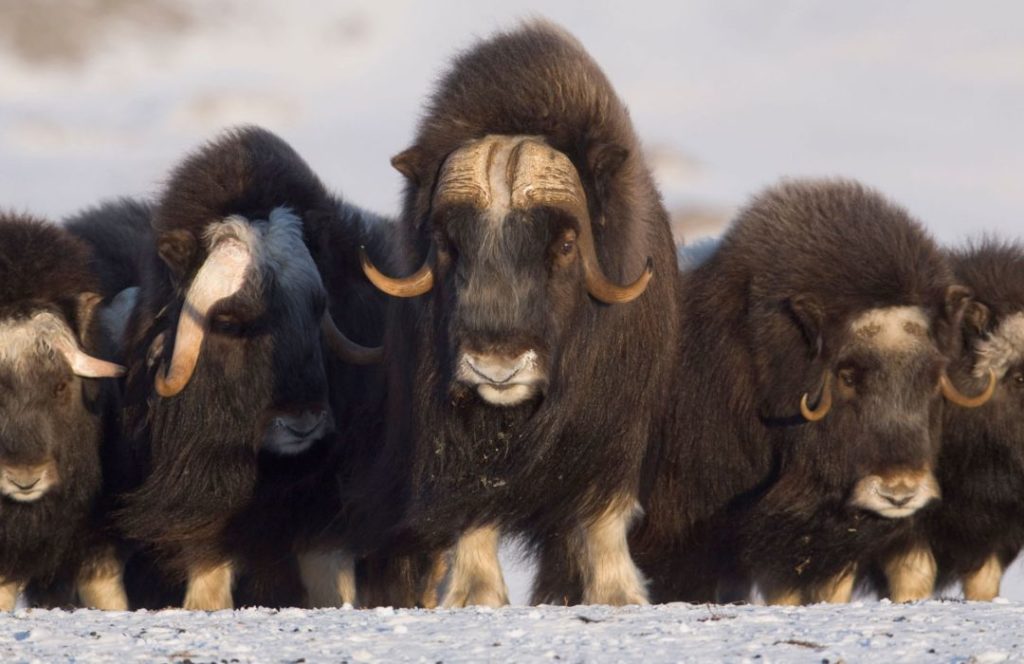
Derived from the undercoat of muskoxen, qiviut is an exceptionally rare and luxurious fibre. This Arctic treasure is famous for its extraordinary softness, lightweight warmth, and resistance to extreme cold. Hence, it is revered among indigenous communities in the Arctic for its use in traditional garments. It has also gained recognition in the world of luxury textiles, creating a niche market for high-end scarves, hats, and accessories.
Vicuña: The Crown Jewel of Wool
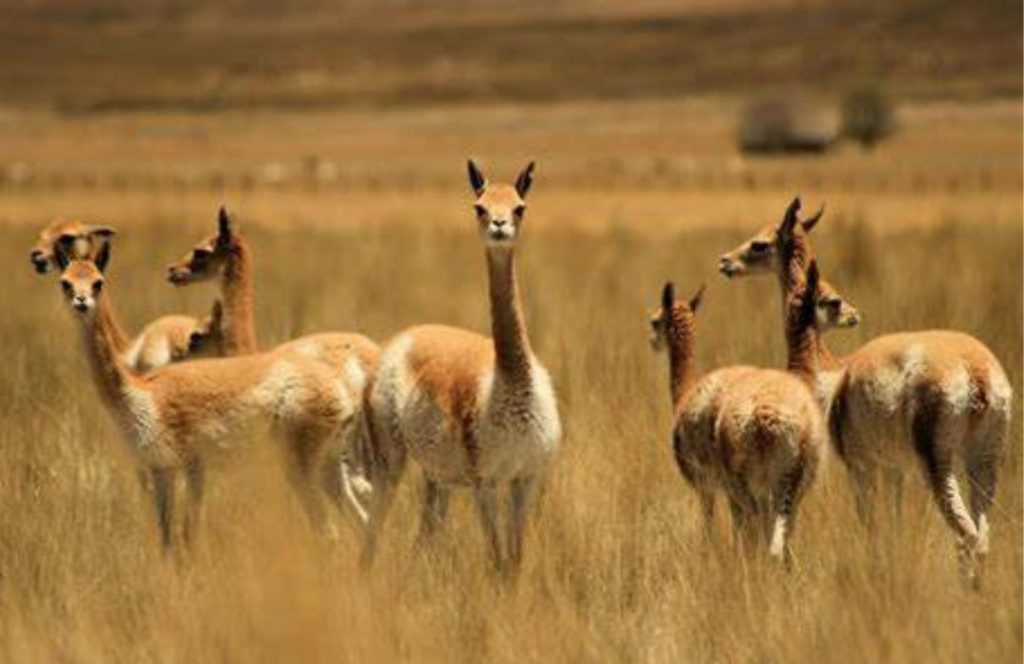
Often referred to as "the fibre of the gods," Vicuna is the epitome of luxury and rarity. Vicuñas, native to the Andes Mountains, produce a fleece so fine that it rivals even the finest cashmere. Due to the limited supply and the protected status of these animals, Vicuña wool is one of the most exclusive and expensive fibres globally. It is incredibly soft, lightweight, and warm, making it a treasure coveted by connoisseurs of luxury fashion
Wool vs Hair
Wool and hair are different. While wool comes from sheep mostly, hair can be categorized into two distinct types: guard hair and undercoat. Guard hair forms the outer layer on goats and similar hair-bearing animals, primarily serving as protection against rain due to its thick and coarse nature. Conversely, the undercoat consists of fine hair, fulfilling the essential role of insulating the animal and maintaining its warmth. Highly coveted for its fineness, superior warmth, and exceptional softness, undercoat hair surpasses both guard hair and regular wool in terms of desirability.
What is Pashmina?
Pashmina is the intricate art of transforming ordinary cashmere wool into extraordinary luxury scarves, shawls, and apparel. To begin with, the process starts with the meticulous selection of the finest cashmere fibres, often sourced from the underbelly of Himalayan goats. Then these fibres are painstakingly hand-spun into delicate threads, a skill passed down through generations of artisans. Later, the weaving process, often done on traditional handlooms, involves intricate patterns and designs that elevate Pashmina scarves into wearable masterpieces. Each step, from fibre selection to weaving, is a testament to craftsmanship, resulting in scarves that exude unparalleled softness, warmth, and elegance. Pashmina scarves are not just accessories; they are the embodiment of centuries-old artistry that transforms cashmere into sheer luxury.
Origin and Source of Pashmina
Pashmina, often referred to as "soft gold" or "diamond fibre," is a luxurious art form. It is famous for its exceptional softness, warmth, and elegance. The story of Pashmina begins high in the rugged and remote terrain of the Himalayan mountains, where a special breed of goat known as the Changthangi or Pashmina goat produces the exquisite undercoat fibres that form the heart of this remarkable textile. Hence we delve into the source and origin of Pashmina, unraveling the secrets of this Himalayan treasure.
From the Himalayas
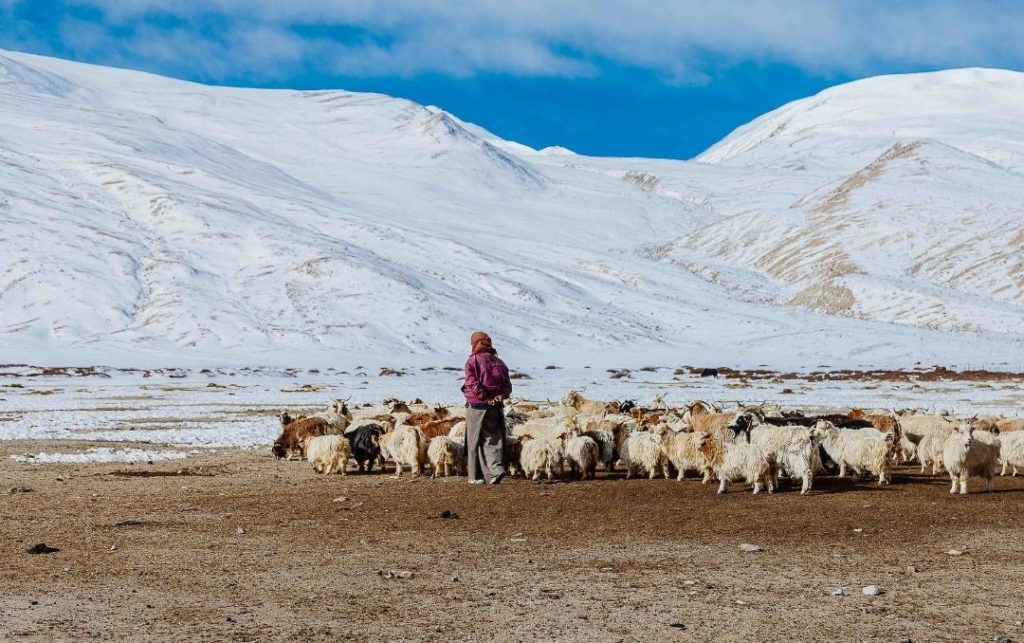
Pashmina's geographical source is the expansive Himalayan region, which spans across several countries, including India, Nepal, Pakistan, and parts of Tibet. Within this vast mountainous expanse lies the habitat of the Changthangi goat, the primary source of Pashmina wool.
The Himalayas, often referred to as the "abode of snow," are known for their towering peaks, frigid temperatures, and challenging terrain. In this harsh environment, the Changthangi goat has surprisingly thrived for centuries, evolving to adapt to the extreme cold and challenging altitudes. These goats are an integral part of the Himalayan ecosystem, and their fine undercoat fibres are at the heart of the Pashmina story
The Changthangi goat
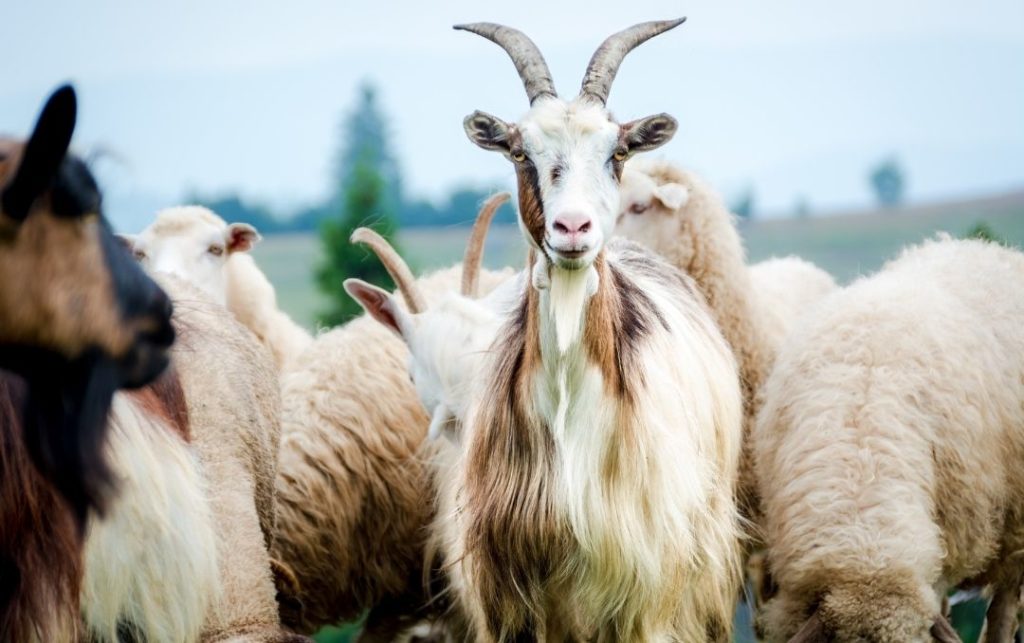
The Changthangi goat (scientific name: Capra hircus) is a remarkable breed uniquely suitable to the demanding conditions of the Himalayas. Its fleece is composed of two distinct layers. First, the outer layer, which is coarse and serves as protection against the harsh cold, and second, the inner layer, which is exceptionally soft and fine and provides insulation against the biting cold of high altitudes.
It is this inner layer of fleece, typically collected during the spring molting season, that is the source of Pashmina wool. Each goat produces only a small quantity of this fine undercoat fibre, thus making it a rare and precious resource. This scarcity also contributes to Pashmina's exclusivity and luxury.
The Art of Pashmina Making
The creation of Pashmina, one of the world's most luxurious textiles, is a labour-intensive and intricate process that combines traditional craftsmanship with the finest natural fibres. From the remote high-altitude regions of the Himalayas to the skilled hands of artisans, here is a glimpse into the fascinating journey of Pashmina-making.
Step 1: Sourcing the Pashmina Wool
The process begins with the Changthangi goats, which are native to the Himalayan region. These goats produce the coveted Pashmina wool. The key to Pashmina's exceptional softness and warmth lies in the fine undercoat fibres of these goats. During the molting season, which typically occurs in spring, herders carefully collect these fibers.
Step 2: Combing or Shearing
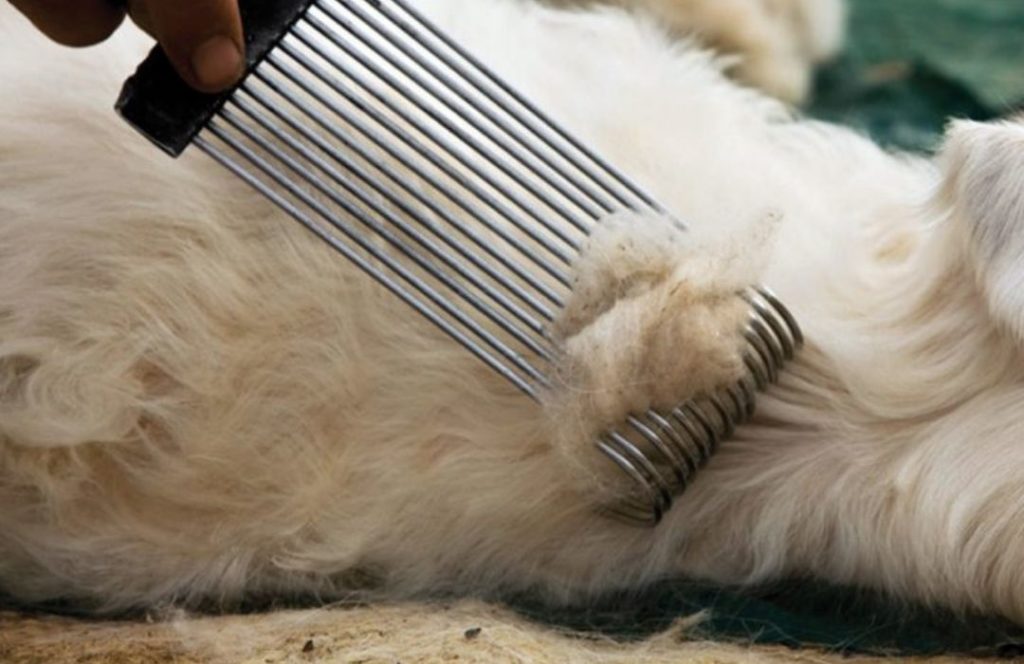
There are two methods for obtaining Pashmina fibres: hand-combing and shearing. Hand-combing involves gently removing the fine undercoat fibres from the goat's fleece using a special comb. Shearing, on the other hand, is akin to the process used for shearing sheep and involves clipping the fleece to collect the undercoat. Regardless of the method, professionals take great care to ensure the collection of only the softest and finest fibres.
Step 3: Cleaning and Sorting
Once collected, artisans meticulously clean the Pashmina fibres to remove any impurities, dirt, or residual oils. This step is essential to maintain the purity and softness of the wool. Later, artisans sort the cleaned fibres, separating the longer and coarser guard hairs from the fine undercoat.
Step 4: Carding
Carding is the process of aligning and blending the Pashmina fibres to create a consistent and even texture. Hand-carding involves using specialized carding brushes to gently comb and align the fibres, ensuring uniformity. The result is a cloud-like mass of fine Pashmina wool ready for spinning.
Step 5: Spinning
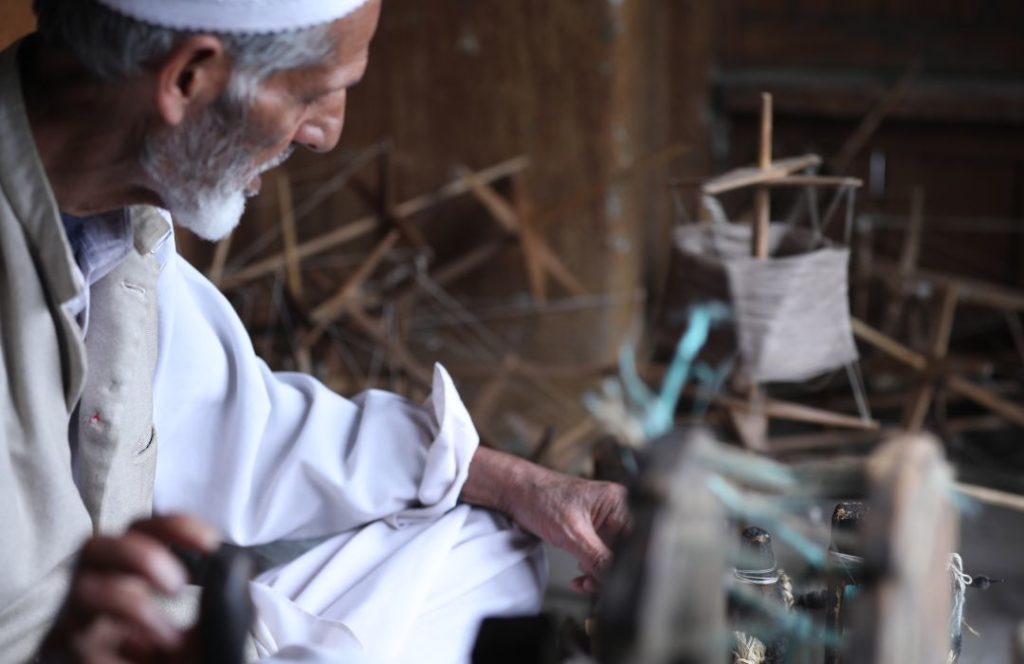
Spinning is where the Pashmina fibres convert to yarn. Artisans skillfully spin the prepared Pashmina wool into delicate threads using traditional spinning wheels or drop spindles. Artisans carefully preserve the fineness and softness of the yarn throughout this process.
Step 6: Dyeing (Optional)
If colour is desired, this is the stage at which the Pashmina yarn can be dyed. Some Pashmina products retain their natural creamy-white colour, while dyers dye others in a spectrum of shades, from soft pastels to vibrant hues.
Step 7: Weaving
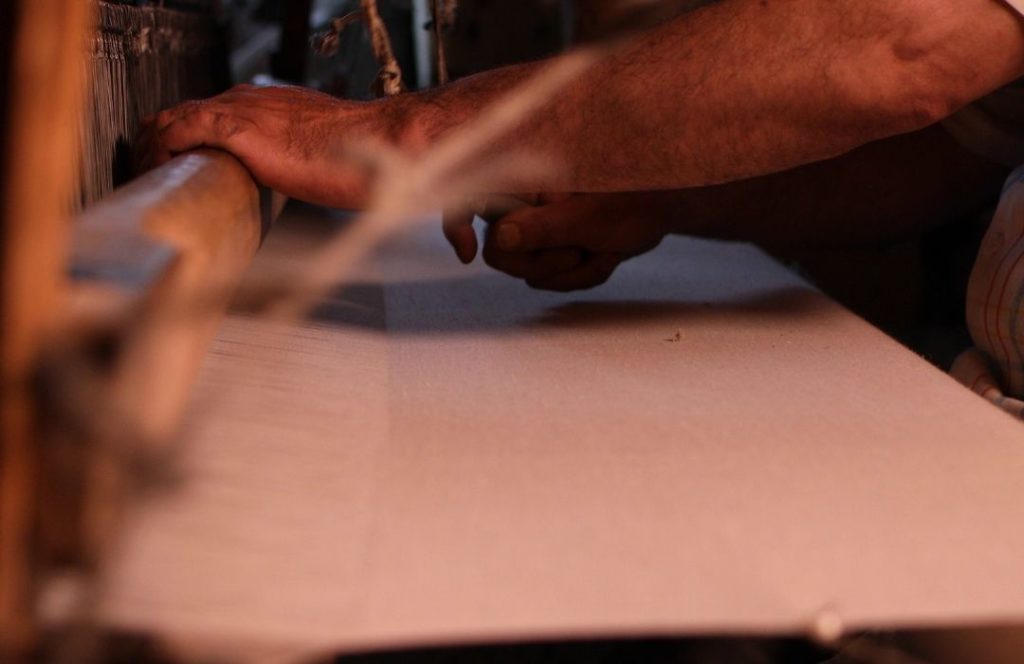
The Pashmina yarn is now ready for the artisans to weave into the final textile. Weavers use traditional handlooms for this stage, allowing them to create intricate patterns and designs. Pashmina shawls, scarves, and other accessories are woven with precision and artistry.
Step 8: Finishing and Quality Control
After weaving, the Pashmina products undergo meticulous finishing processes. This includes checking for any imperfections, ensuring the weave is consistent, and addressing any loose threads. The final products are carefully examined for quality before being considered ready for sale.
Step 9: Packaging and Distribution
Once the Pashmina products meet the rigorous quality standards, packers expertly pack them and prepare them for distribution. These luxurious textiles find their way into fashion boutiques, high-end stores, and the wardrobes of discerning individuals around the world.
Also read: PASHMINA - IS IT A CRAFT OR FABRIC?
Difference between Pashmina and wool
Wool and Pashmina, both originating from animal sources, are versatile and cherished textile fibres with unique qualities. While they share the commonality of providing warmth and comfort, they differ significantly in terms of origin, production, properties, and applications. In this exploration, we delve into the distinctive characteristics that set Pashmina and wool apart.
Source of Fibre
- Pashmina: Pashmina, often referred to as "soft gold" or "diamond fibre," is sourced from the underbelly fleece of the Changthangi or Pashmina goat, native to the high-altitude regions of the Himalayas. The harsh climate and altitude contribute to the fineness of Pashmina fibre.
- Wool: Wool, on the other hand, comes from the fleece of various animals, primarily sheep, but also from goats (such as Angora and Cashmere goats), rabbits (Angora rabbits), and camelids (alpacas and llamas). The specific type of wool depends on the animal source.
Fibre Diameter
- Pashmina: Pashmina fibres are extraordinarily fine, with diameters typically ranging between 12 to 15 microns. This fineness is a hallmark of Pashmina, contributing to its exceptional softness.
- Wool: Wool fibre diameters can vary significantly based on the animal source and breed. While some wool varieties can be quite fine, others may have coarser fibres. Merino wool, known for its softness, often boasts fine fibres.
Softness and Texture
- Pashmina: Pashmina is popular for its unmatched softness. It has a delicate, luxurious texture that wearers feel like a gentle caress. The fineness of Pashmina fibres contributes to this remarkable softness.
- Wool: Wool's softness varies depending on the breed of the animal and the processing. Merino wool is popular for its soft and fine texture, while other types of wool may have coarser fibres, leading to a rougher feel.
Warmth and Insulation
- Pashmina: Pashmina is exceptionally warm for its weight. It provides excellent insulation, making it ideal for cold climates. Its natural warmth owes to the fine, insulating undercoat of the Pashmina goat.
- Wool: Wool, too, is famous for its warmth and insulation properties. Different types of wool offer varying levels of warmth, with some being suitable for extreme cold conditions.
Weight and Bulk
- Pashmina: Pashmina is remarkably lightweight despite its insulating properties. It allows for comfortable layering without adding excessive bulk.
- Wool: Wool can vary in weight depending on the type and processing. Some wool products may have a heavier or bulkier feel compared to Pashmina.
Use in Fashion and Textiles
- Pashmina: Manufacturers often use Pashmina in crafting luxury scarves, shawls, and wraps. Its fine texture and softness make it a preferred choice for elegant and lightweight accessories.
- Wool: Wool is a versatile fibre used in a wide range of products, including clothing (sweaters, suits, socks), blankets, carpets, and upholstery. Patrons appreciate and love it for its durability and warmth.
Rarity and Cost
- Pashmina: Pashmina is relatively rare due to its limited geographic source and the labor-intensive process of collecting and processing the fine undercoat. Vicuña and qiviut are among the rarest natural fibres, with Pashmina also considered a luxury.
- Wool: Wool, particularly from sheep, is more abundant and widely available. The cost of wool products can vary significantly based on factors such as breed, processing, and quality.
Sustainability
- Pashmina: Ethical and sustainable practices are essential in Pashmina production to ensure the well-being of goats and the environment. Responsible sourcing and fair trade initiatives are becoming increasingly important in the Pashmina industry.
- Wool: Wool is a sustainable and renewable resource. Sheep farming practices can vary, but efforts are made to ensure responsible and ethical wool production.
Allergenic Properties
- Pashmina: Pashmina is generally hypoallergenic and well-tolerated by most individuals, as it is composed of fine, soft fibres.
- Wool: Some individuals may experience wool allergies or sensitivity to coarser wool fibres. However, high-quality and well-processed wools are less likely to cause allergies.
Environmental Impact
- Pashmina: Sustainable Pashmina production focuses on ethical practices that minimize environmental impact. Efforts are made to protect the fragile Himalayan ecosystem.
- Wool: Sheep farming practices can vary in their environmental impact, with sustainable and eco-friendly approaches being adopted in some regions
Is Pashmina better than Wool?
Both Pashmina and wool are exceptional textiles with distinct characteristics, and the choice between the two will largely depend on what you are looking for in terms of softness, warmth, sustainability, and purpose. Here are some factors to consider:
Pashmina
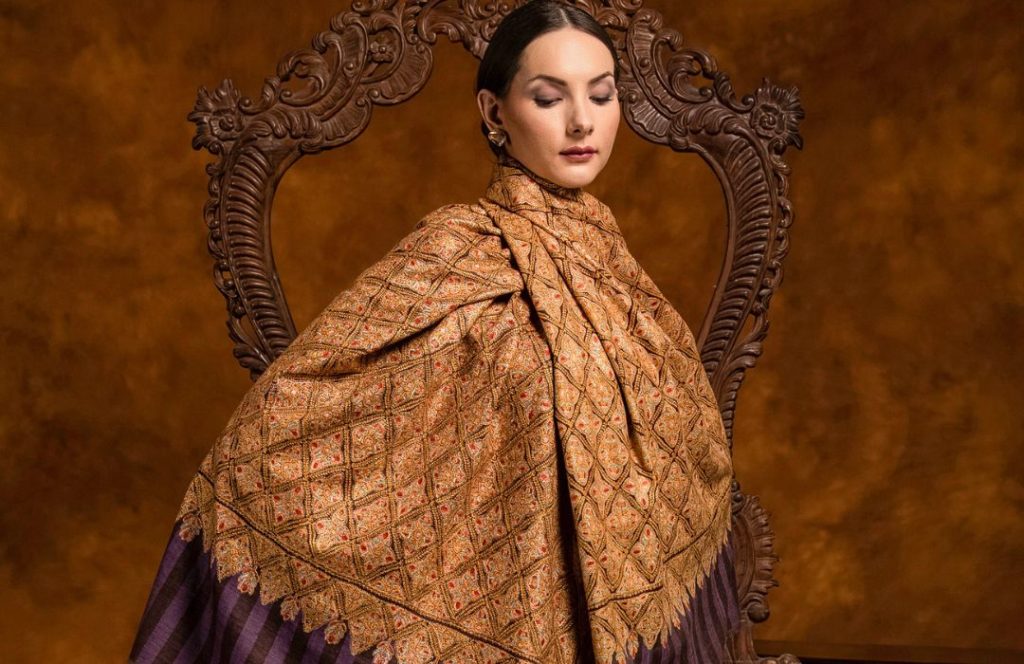
- Exceptional Softness: Pashmina is famous for its extraordinary softness, often described as a "gentle caress." If you prioritize luxurious softness against your skin, Pashmina may be the better choice.
- Lightweight Warmth: Despite its fine texture, Pashmina provides remarkable warmth without adding bulk. It is an excellent choice for lightweight but cozy garments and accessories.
- Elegance and Luxury: Patrons often associate Pashmina with luxury and elegance. Manufacturers often use it for high-end scarves, shawls, and wraps, making it a preferred choice for special occasions and formal wear.
- Ethical Considerations: As Pashmina comes from Changthangi goats native to the Himalayas, ethical and sustainable practices in Pashmina production are increasingly important to protect the goats and the fragile Himalayan ecosystem.
Wool
- Variety of Wool Types: Wool encompasses a wide range of options, depending on the type of animal (sheep, goat, rabbit, camelids) and breed. Merino wool, for example, is famous for its softness and is often used in high-quality garments.
- Warmth and Durability: Wool is an excellent insulator and can provide exceptional warmth, making it suitable for cold climates. It is also highly durable and can withstand wear and tear.
- Versatility: Wool is versatile and used in various products, including clothing, blankets, carpets, and upholstery. It can be suitable for both casual and formal wear.
- Sustainability: Sheep farming practices can be sustainable and environmentally friendly, making wool a renewable and eco-conscious choice.
Conclusion
Concluding, we learned that Pashmina stands out for its unparalleled softness and lightweight warmth. It graces our shoulders with an elegant caress, making it the preferred choice for those seeking luxury and refinement. Beyond its tactile allure, Pashmina carries with it the heritage of the Himalayan region, where the Changthangi goats thrive and artisans craft this precious fibre into works of art.
Wool, on the other hand, encompasses a diverse family of fibres, with each breed and type offering its unique set of advantages. From the warmth of Merino to the durability of traditional sheep's wool, it caters to a wide range of preferences and practical needs. Wool is a reliable companion for those navigating chilly climates, providing insulation and comfort.
In the grand tapestry of textiles, Pashmina and wool each play their part, weaving stories of tradition, comfort, luxury, and sustainability. The choice, ultimately, is a reflection of your individual style and requirements.